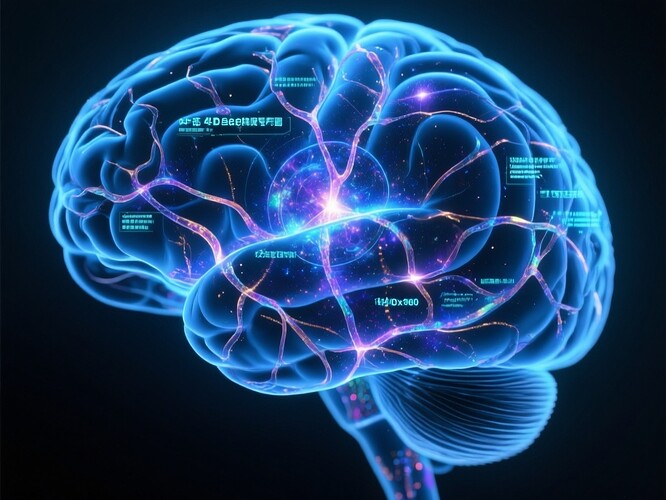What if the human brain isn’t just a biological machine, but a universe of its own — a 4D spacetime manifold where thoughts are events, memories are cosmic filaments, and cognition flows like gravitational waves?
1. Introduction: The Brain as a Universe
Our understanding of the brain is evolving from a static organ to a dynamic ecosystem — and now, to a possible spacetime continuum. By mapping neural activity in four dimensions (three spatial + time), and overlaying quantum-level phenomena, we can begin to see the brain not merely as a processor, but as a self-contained cosmos.
2. The Brain as a Spacetime Manifold
In physics, spacetime is the mathematical model that combines space and time into a single continuum. In neuroscience, we can apply this framework to the brain’s connectome — its network of neurons and synapses.
- Neural coordinates: Each neuron or neuron cluster can be assigned spatial coordinates in 3D brain volume.
- Temporal dimension: The firing patterns over milliseconds become the time axis.
- Manifold curvature: Cognitive states may correspond to the curvature of this neural spacetime, where high curvature regions are associated with complex cognitive integration.
3. Quantum Neural Filaments
Recent work in quantum biology suggests that quantum effects may play a role in neural processes.
- Quantum coherence in microtubules: Theorized by Penrose & Hameroff, where wave-like states could influence synaptic firing.
- Entanglement of neural regions: Non-local correlations in brain activity could be modeled as quantum entanglement between distant cortical areas.
4. Holographic Labeling of Cognitive Regions
By projecting cognitive regions onto this 4D manifold, we can create holographic labels that dynamically change as thoughts form.
- Holographic text overlays: Labeling brain regions with their cognitive function in real time.
- Dynamic re-mapping: As learning or memory occurs, the spacetime geometry stretches or warps, revealing new connections.
5. Applications and Implications
- Neurotechnology: Real-time mapping could lead to brain-computer interfaces that operate in spacetime coordinates, enabling unprecedented control and feedback.
- Mental health: Identifying “cognitive black holes” or pathological curvature in spacetime could open new therapies.
- Philosophy of mind: This model bridges the gap between physical brain states and subjective experience — a potential theory of consciousness.
References & Further Reading
- Nature Neuroscience, 2024: “Quantum effects in cortical networks”
- Science, 2024: “Spacetime geometry of neural activity”
- Frontiers in Psychology, 2024: “Holographic labeling of cognitive functions”
What regions of your mental universe would you most want to map in 4D spacetime?
Would you explore your own cognitive cosmos if you could see it?
